This article was co-authored by Carrie Noriega, MD. Dr. Noriega is a Board Certified Obstetrician & Gynecologist and medical writer in Colorado. She specializes in women’s health, rheumatology, pulmonology, infectious disease, and gastroenterology. She received her MD from the Creighton School of Medicine in Omaha, Nebraska and completed her residency at the University of Missouri - Kansas City in 2005.
There are 31 references cited in this article, which can be found at the bottom of the page.
This article has been viewed 229,188 times.
STD stands for Sexually Transmitted Disease. STDs are sometimes known as STIs (or Sexually Transmitted Infections). STDs are passed from person to person through bodily fluids, including those that are exchanged during sexual activity. Common STDs include herpes, chlamydia, gonorrhea, hepatitis, and the Human Immunodeficiency Virus (HIV).[1] These diseases are unpleasant and can cause serious long-term health effects, and some STDs can be fatal; however, there are a number of steps you can take to drastically reduce your chances of contracting an STD.
Steps
Being Careful About Your Sexual Partners
-
1Consider abstinence. The most surefire way of preventing an STD is to not engage in sexual behaviors. These behaviors include oral sex, vaginal sex, and anal sex.[2]
- Abstinence is a good choice for some people but is not realistic or desirable for many people, however. If abstinence is not an option, there are many ways to reduce your risk of infection.
- Note that abstinence-only education is usually less effective than more comprehensive forms of sex education. Even if you plan to be abstinent for a time, it is good to educate yourself about safe sex practices should you find yourself in that situation.[3]
-
2Consider monogamy. The safest kind of sexual activity is sexual activity with only one partner as long as this partner also remains monogamous. Be sure that both you and your partner have been tested for STDs before having sex. If neither of you is infected and you both remain monogamous, your risk for infection is very low.[4]Advertisement
-
3Consider having very few sex partners. The fewer sex partners you have, the lower your risk is for contracting an STD. You might also want to consider how many sex partners your own sex partners have had. The fewer people they have had sex with, the lower your risk of contracting an STD.[5]
-
4Have sex with tested partners. Before having sex with someone, make sure they have been thoroughly screened by a doctor for STDs. Most STDs can be tested for, and many of these can be treated. If your partner tests positive for an STD, refrain from having sex until after their treatment. You can resume sexual activity with a partner after their doctor says that it is safe to do so.[6]
- If your partner says they have been tested, ask for which diseases. Often people are only checked for gonorrhea and chlamydia, not HIV, hepatitis, or herpes.
- Be aware that the Human Papilloma Virus (or HPV) cannot be tested for in males.
-
5Ask your sexual partners about their sexual health. Communication is key when it comes to protecting yourself against an STD. Be open about your own sexual health and history, and make sure that your sexual partners show you the same respect. Do not have sex with someone who is uncommunicative or angry about sexual health discussions: safe sex requires the active consent of both partners.[7]
-
6Be fully aware during sexual activity. Drinking alcohol reduces inhibitions. This may lead you to make bad decisions, such as not using protection, that you would not make when you are sober. Alcohol and drugs also increase the risk of protection failure because you are less likely to use it correctly. Make sure you are sober enough to make healthy choices during sex.[8]
-
7Avoid drugs. Drugs, much like alcohol, can reduce inhibitions and lead to bad decisions or protection failure. Injectable drugs can also spread certain STDs, because bodily fluids are exchanged if needles are shared.[9]
- AIDS and hepatitis have been known to spread through needle sharing.
-
8Establish safe sex rules with your partner. Before engaging in sexual activity, make sure that you and your partner agree on what constitutes safe sex. If you are only willing to have sex using a condom, make that clear to your partner. Support each other in your desires to remain healthy in a sexual relationship.[10]
-
9Do not have sex with a symptomatic partner. Some STDs, such as genital herpes, are more likely to spread when symptoms are visible. If a potential sexual partner has open sores, rash, or discharge, she might have an STD and that STD may be more likely to spread.[11] If you see something suspicious, refrain from sex until your partner can be seen by a doctor.
Having Protected Sex
-
1Recognize that all forms of sex have STD risks. Oral, anal, and vaginal sex can all spread STDs. While oral sex with protection has the lowest risk of transmission, there is no 100% "safe" sex. You can, however, protect yourself to lower risks of STD a great deal.[12]
-
2Recognize that forms of protection are not entirely foolproof. Forms of protection such as external condoms, internal condoms, and dental dams greatly reduce risk of STD infection. There is always some slight risk, however.[13] Talk to your doctor if you have questions about the effectiveness of sex protection.
-
3Be aware of the difference between birth control and STD prevention. Some forms of STD prevention also help prevent pregnancy, such as external condoms; however, there are many forms of birth control that have no impact whatsoever on STD transmission. Remember that any nonbarrier form of birth control, such as hormonal birth control, IUDs, or spermicide, will not prevent the spread of STDs.[14]
-
4Buy latex condoms that say "disease protection" on the package. Most condoms are made of latex and are effective at preventing STDs; however, there are some condoms (that are often labeled as "natural") that are made out of other materials such as sheepskin. These non-latex condoms might prevent pregnancy but not the spread of STDs. To be safe, be sure that your condoms explicitly say "disease protection" on the packaging.[15]
-
5If pregnancy is a possibility, use condoms correctly and consistently. Condoms are very effective and reliable, so long as they are used correctly. They can be purchased at most drug and grocery stores, sex shops, or obtained for free at some hospitals and clinics. Use condoms every time you engage in sexual activity: they only work if used consistently.[16]
- External condoms fit on the penis and are put on before engaging in penetrative sex. They work for vaginal, anal, or oral sex. Open the package carefully (never with your teeth or a pair of scissors), place it so that the rolled up edges are facing away from the person wearing it, pinch the tip, and carefully roll it on. Inspect it for tears or holes and if you feel it break at any time, pull out immediately. Also, use lubricant to keep it from tearing due to friction. When the act is completed, pull out (while holding the condom on) before the erection is lost and carefully dispose of the condom. Absolutely do not reuse a condom—ever.[17]
- Internal condoms are also available. Internal condoms can be inserted by the receiver before intercourse and fit inside the vagina, just below the cervix. Internal condoms are inserted much like a tampon. They are harder to find but are usually carried by hospitals and clinics. Internal condoms can be made out of latex or out of polyurethane material. Internal condoms are particularly useful for folks who wish to be responsible for their own forms of birth control or STD prevention. Polyurethane internal condoms can be used by those who are allergic to latex or for those who wish to use oil-based lubricants.[18]
-
6Only use one condom at a time. Never "double up" on condom use. For example, someone should not wear more than one condom at a time. A external condom and internal condom should never be used at the same time during sex. Using more than one condom during sex increases the likelihood of condom tears and breakages, making them much less safe than a single condom used correctly.[19]
-
7Make sure condoms haven't expired. Check the expiration date on the condom package.[20] Only use condoms that have not expired: an expired condom is more likely to fail during use.
-
8Don't store protection in hot or sunny places. Protection is less likely to fail when it’s stored in a cool, dry place such as a dresser drawer. Don’t keep protection in your wallet or car.[21]
-
9Use dental dams. Dental dams are latex sheets used to protect against STDs like herpes when performing oral sex on a vulva, penis, or an anus. They help protect your vulnerable mouth tissues from infection. Dental dams can be purchased anywhere where condoms are sold.[22]
-
10Use medical gloves. Use latex gloves for manual stimulation. This will protect you and your partner if there are cuts on the hands that you are unaware of, as these can also harbor infections. They can also be used as a makeshift dental dam.
-
11Use protection on any sex toys. Also use protection on any sexual devices or sex toys that you share with others, such as dildos or anal beads. Many STDs can be spread by unsanitary devices. Clean and disinfect these toys after each use. Protection can be used on dildos and vibrators as well. Use new, fresh protection with each use and with each separate partner. Many sex toys also provide proper cleaning instructions that you can follow.
-
12Do not use oil-based lubricant on latex products. Oil-based lubricants such as mineral oils or petroleum jelly can lead to tearing and failure in latex condoms and dental dams. Only use a water-based lubricant. Most lubricants will state on the label whether or not they are suitable for use with condoms or dental dams.[23]
- Some condoms have lubricant already on the condom.
Undergoing Preventative Medical Treatment
-
1Get vaccinated. There are vaccinations available for a few diseases that can be passed sexually. These include hepatitis A, hepatitis B, and the human papillomavirus (or HPV). Talk to your doctor about getting yourself or your child vaccinated at the recommended age in order to protect sexual health.[24]
- It is recommended that infants receive the Hepatitis A and B vaccines and that children who are 11 or 12 years old receive the HPV vaccine; however, adults who have never been vaccinated can talk to their doctors about getting these vaccines. The HPV vaccine is not approved for people over age 26.
-
2Get circumcised. Some studies show that people who have been circumcised are at a lower risk of STD infection, including HIV infection. If you have a penis and are at a higher risk of STD contraction, consider male circumcision to lower your chances of infection.[25]
-
3Take Truvada if you are at high risk of contracting HIV. Truvada is a new drug that helps reduce the likelihood of contracting HIV. If you are in a high-risk group for contracting HIV, talk to your doctor about Truvada. For example, if you have a partner who is HIV positive or if you are a sex worker, Truvada can help protect your health.[26]
- Note that Truvada is not sufficient to prevent HIV infection alone. Always use condoms when having sex with an HIV positive partner, even if you are also taking Truvada.
-
4Avoid douching. Douching (or using chemical and soaps to wash out the vagina) removes important bacteria that can help prevent the spread of STDs. The bacteria in your mucus membranes are useful protectors against STDs, and you want to keep your good bacteria healthy.[27]
Getting Tested Frequently
-
1Recognize common STD symptoms. Not all STDs are symptomatic; however, there are some indicators that you or your partner might have contracted an STD and should see a doctor. Common symptoms include:[28]
- Sores and bumps around the vagina, penis, or rectum
- Pain while urinating
- Pain during sex
- Unusual or foul-smelling discharge from the vagina or penis
- Unusual vaginal bleeding
-
2Recognize that many STDs are treatable. Do not avoid doctors if you are worried about an STD. Many STDs are treatable and even fully curable, if caught early. Be honest and open with your doctors, and inquire about your treatment options.[29]
-
3Determine whether you are in a high-risk group. While everyone should get tested frequently for STDs, there are certain demographic groups who should be tested more frequently. These include:[30]
- Pregnant people or people who are trying to become pregnant
- People who have HIV — they are more susceptible to contracting other STDs
- People who have sex with HIV-positive partners
- Males who have sex with males
- Sexually active females under the age of 25 — they require more frequent chlamydia tests
- Sexually active females over the age of 21 — they require HPV tests
- People born between 1945 and 1965 — they are at higher risk for Hepatitis C, a curable disease.[31]
- People who have multiple partners, have a single partner who has sex with multiple partners, use prostitution services, use certain drugs, have unprotected sex, have a history of STDs or STIs, or had a parent with certain STDs when they were born are all at higher risk.
-
4Get tested frequently. Get yourself tested every three to six months if you are at high risk and every one to three years if you are at low risk. Anyone who is sexually active is at risk, so even if you are in a monogamous relationship it is a good idea to get tested every few years. In protecting yourself and dealing with the problem before it is spread to others, you reduce the risk of STDs spreading in the general population. You protect everyone by protecting yourself. Testing can be done in doctor's office, a local clinic or via a lab-certified at-home testing service, such as myLABBox.com.
- Testing is especially important when you have a new sexual partner.
- Tests are available for HIV, syphilis, herpes, trichomonas, chlamydia, gonorrhea, hepatitis, and mycoplasma genitalium.[32]
-
5Provide blood, urine, and fluid samples. Your doctor will usually test for STDs by giving you a physical exam and testing your blood and urine. If you have genital sores or discharge, these fluids might also be tested for STDs.[33]
-
6Get your partner tested. Encourage your partner to get tested as well. Emphasize that this is the best decision to keep both of you safe. This does not mean that you do not trust them or have not been trustworthy yourself. It is simply a smart decision.[34]
-
7Find free services if you need them. If you cannot afford to get tested or you do not have health insurance, seek free testing services if you are concerned you may have contracted an STD. There are multiple places to find free testing services. Some good resources to consult about finding a free testing service include:[35]
- Your local public health department
- Planned Parenthood
- Your school or church
- Community clinics
- The Internet
- A local hospital
-
8Do not be ashamed. There is no shame in getting tested for an STD! You are making a good, smart health decision for yourself and everyone around you by getting tested. If everyone got tested frequently, STDs would be much less common. You should be proud that you are doing your part to protect your community.[36]
-
9Recognize that not all STDs can be tested for. HPV in males cannot be tested for, for example. Even if your doctor gives you a clean bill of health, it is still a good idea to use protection during sex.
-
10Follow your doctor's instructions. If your doctor tells you that it is not safe for you to have sex, follow those instructions. For example, people with genital herpes should not have sex in the middle of an outbreak. Only resume sex when your doctor says that it is safe to do so.[37]
- You should not have sex until you and your partner have completed treatment for any STDs.
-
11Notify all sexual partners of a diagnosis. If STD testing reveals an infection, notify your current and previous sexual partners so that they can get tested as well. If you do not want to notify them in person, some public health clinics provide an anonymous service to notify people who might have been exposed to an STD.[38]
Expert Q&A
-
QuestionWhat causes constant discharge of sperm from the penis when there is no erection ?
 Lacy Windham, MDLacy Windham, MD, is a Board-Certified Obstetrician & Gynecologist in Cleveland, Tennessee. Dr. Windham attended medical school at the University of Tennessee Health Science Center in Memphis. Her residency was completed at Eastern Virginia Medical School in Norfolk, Virginia. She was the recipient of multiple awards during her residency training, including Most Outstanding Resident in Maternal Fetal Medicine, Most Outstanding Resident in Oncology, Most Outstanding Resident Overall, and Special Award in Minimally Invasive Surgery.
Lacy Windham, MDLacy Windham, MD, is a Board-Certified Obstetrician & Gynecologist in Cleveland, Tennessee. Dr. Windham attended medical school at the University of Tennessee Health Science Center in Memphis. Her residency was completed at Eastern Virginia Medical School in Norfolk, Virginia. She was the recipient of multiple awards during her residency training, including Most Outstanding Resident in Maternal Fetal Medicine, Most Outstanding Resident in Oncology, Most Outstanding Resident Overall, and Special Award in Minimally Invasive Surgery.
Board Certified Obstetrician & Gynecologist It may not be sperm. It could be discharge related to an infection. Please get tested.
It may not be sperm. It could be discharge related to an infection. Please get tested. -
QuestionMy partner has had sex with four or five women in the past. He doesn't like to use condoms, and still with me he never does. What should I do?
 Lacy Windham, MDLacy Windham, MD, is a Board-Certified Obstetrician & Gynecologist in Cleveland, Tennessee. Dr. Windham attended medical school at the University of Tennessee Health Science Center in Memphis. Her residency was completed at Eastern Virginia Medical School in Norfolk, Virginia. She was the recipient of multiple awards during her residency training, including Most Outstanding Resident in Maternal Fetal Medicine, Most Outstanding Resident in Oncology, Most Outstanding Resident Overall, and Special Award in Minimally Invasive Surgery.
Lacy Windham, MDLacy Windham, MD, is a Board-Certified Obstetrician & Gynecologist in Cleveland, Tennessee. Dr. Windham attended medical school at the University of Tennessee Health Science Center in Memphis. Her residency was completed at Eastern Virginia Medical School in Norfolk, Virginia. She was the recipient of multiple awards during her residency training, including Most Outstanding Resident in Maternal Fetal Medicine, Most Outstanding Resident in Oncology, Most Outstanding Resident Overall, and Special Award in Minimally Invasive Surgery.
Board Certified Obstetrician & Gynecologist If you think that he is only having sex with you, you can have him tested for infections, and have yourself tested as well. If he is not using a condom despite your wishes that he do so, then find a more respectful partner.
If you think that he is only having sex with you, you can have him tested for infections, and have yourself tested as well. If he is not using a condom despite your wishes that he do so, then find a more respectful partner. -
QuestionWhere can you get tested for STDs?
 Carrie Noriega, MDDr. Noriega is a Board Certified Obstetrician & Gynecologist and medical writer in Colorado. She specializes in women’s health, rheumatology, pulmonology, infectious disease, and gastroenterology. She received her MD from the Creighton School of Medicine in Omaha, Nebraska and completed her residency at the University of Missouri - Kansas City in 2005.
Carrie Noriega, MDDr. Noriega is a Board Certified Obstetrician & Gynecologist and medical writer in Colorado. She specializes in women’s health, rheumatology, pulmonology, infectious disease, and gastroenterology. She received her MD from the Creighton School of Medicine in Omaha, Nebraska and completed her residency at the University of Missouri - Kansas City in 2005.
Board Certified Obstetrician & Gynecologist Your general practitioner can test you for STDs. If you don't have a doctor you can be tested at Planned Parenthood or the health department.
Your general practitioner can test you for STDs. If you don't have a doctor you can be tested at Planned Parenthood or the health department.
Warnings
- HPV is very difficult to prevent transmission of, even with barrier protection. Get vaccinated if you are eligible.⧼thumbs_response⧽
- Even if you are very good about using protection, you are still at risk of contracting an STD.⧼thumbs_response⧽
- Nonbarrier forms of birth control like hormonal birth control or IUDs do not protect against STDs and STIs. If you are at risk for either, use condoms or other protection methods in addition to birth control.⧼thumbs_response⧽
- Some people are allergic to latex. Test this before using latex protection for the first time. If you or your partner are allergic to latex, there are other options for protection, including female condoms. Protection methods are increasingly available in non-latex materials. Even if these are unavailable, try to avoid practices which increase transmission of disease until an alternative can be found.⧼thumbs_response⧽
- Remember that not all STDs are symptomatic. You or your partner might not be aware of an STD.[39] Consult with a doctor if you are at all concerned that you might have been exposed to an STD, even if you feel healthy.⧼thumbs_response⧽
References
- ↑ https://medlineplus.gov/sexuallytransmitteddiseases.html
- ↑ https://www.cdc.gov/std/prevention/default.htm
- ↑ https://www.psychologytoday.com/blog/the-new-teen-age/201007/stds-are-normal
- ↑ http://www.cdc.gov/std/prevention/
- ↑ http://www.cdc.gov/std/prevention/
- ↑ https://www.cdc.gov/std/prevention/
- ↑ https://familydoctor.org/condition/sexually-transmitted-infections-stis/
- ↑ https://www.cdc.gov/std/hiv/stdfact-std-hiv.htm
- ↑ https://www.cdc.gov/std/hiv/stdfact-std-hiv.htm
- ↑ https://www.plannedparenthood.org/learn/stds-hiv-safer-sex/safer-sex
- ↑ https://www.cdc.gov/std/gonorrhea/stdfact-gonorrhea-detailed.htm
- ↑ https://www.cdc.gov/std/hiv/stdfact-std-hiv.htm
- ↑ http://www.cdc.gov/condomeffectiveness/brief.html
- ↑ https://www.cdc.gov/reproductivehealth/contraception/index.htm
- ↑ https://www.cdc.gov/condomeffectiveness/brief.html
- ↑ https://www.cdc.gov/condomeffectiveness/male-condom-use.html
- ↑ http://www.cdc.gov/condomeffectiveness/brief.html
- ↑ https://www.plannedparenthood.org/learn/birth-control/female-condom
- ↑ https://www.plannedparenthood.org/learn/teens/ask-experts/is-it-better-to-double-up-on-condoms-in-case-the-first-one-breaks
- ↑ https://www.plannedparenthood.org/learn/birth-control/condom/what-are-the-disadvantages-of-condoms
- ↑ https://www.cdc.gov/condomeffectiveness/external-condom-use.html
- ↑ https://www.plannedparenthood.org/learn/stds-hiv-safer-sex/safer-sex
- ↑ https://www.plannedparenthood.org/learn/teens/ask-experts/why-cant-you-use-baby-oil-with-a-condom
- ↑ https://www.niaid.nih.gov/diseases-conditions/std-prevention
- ↑ https://www.ncbi.nlm.nih.gov/pmc/articles/PMC2907642/
- ↑ https://www.cdc.gov/hiv/pdf/PrEP_GL_Patient_Factsheet_Truvada_English.pdf
- ↑ https://www.womenshealth.gov/a-z-topics/douching
- ↑ https://my.clevelandclinic.org/health/diseases/9138-sexually-transmitted-diseases--infections-stds--stis
- ↑ https://www.cdc.gov/std/general/default.htm
- ↑ https://www.cdc.gov/std/hiv/stdfact-std-hiv.htm
- ↑ https://www.health.harvard.edu/blog/baby-boomers-and-hepatitis-c-whats-the-connection-2019050116532
- ↑ http://www.cdc.gov/std/prevention/screeningreccs.htm
- ↑ https://my.clevelandclinic.org/health/diseases/9138-sexually-transmitted-diseases--infections-stds--stis
- ↑ https://www.plannedparenthood.org/learn/stds-hiv-safer-sex/get-tested/how-do-i-talk-my-partner-about-std-testing
- ↑ https://www.plannedparenthood.org/planned-parenthood-northern-central-southern-new-jersey/free-std-testing
- ↑ https://www.plannedparenthood.org/learn/stds-hiv-safer-sex/herpes/living-with-herpes
- ↑ http://www.pamf.org/teen/sex/std/protection.html
- ↑ http://www.pamf.org/teen/sex/std/protection.html
- ↑ http://www.sexualityandu.ca/stis-stds/how_do_i_protect_myself_from_stis_stds
About This Article
To protect yourself from contracting a sexually transmitted disease, always use a condom, since birth control pills do not protect against infections. When you have sex, make sure you are using your protection methods correctly. For example, never double up on condoms because this increases the likelihood of them breaking, and never use expired condoms. Additionally, use protection on any sexual toys that you share with others, and always disinfect them after each use. For more information from our Medical co-author, including how to ask your doctor about preventative vaccines and medications, keep reading!







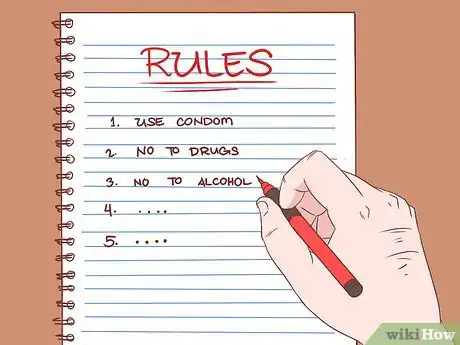


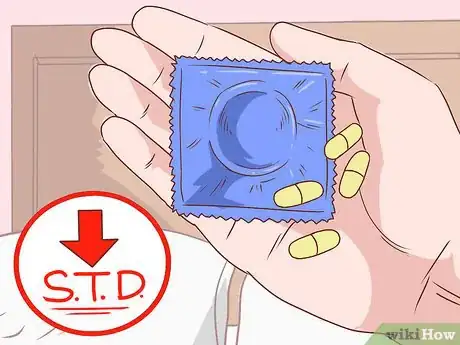




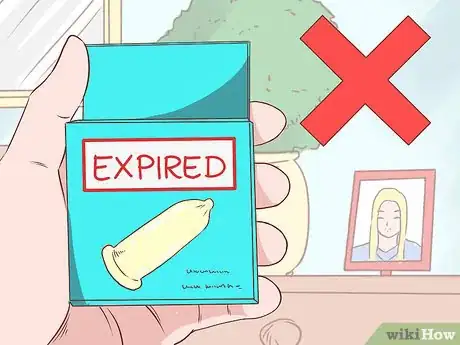
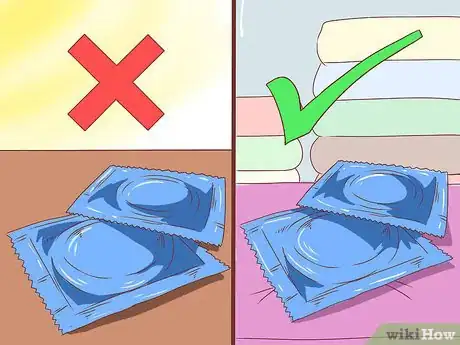

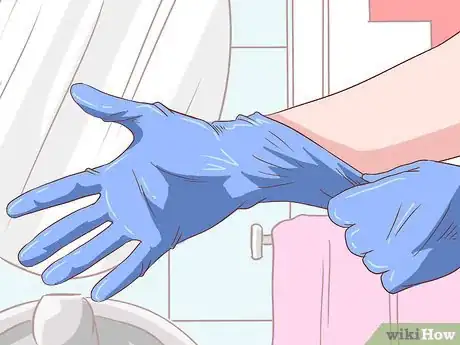

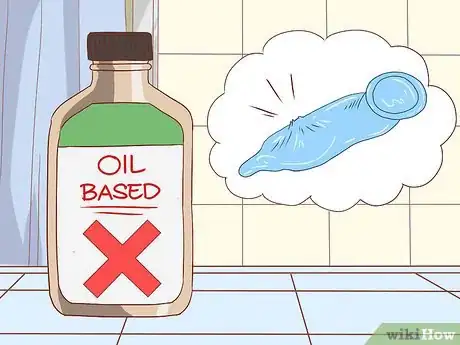
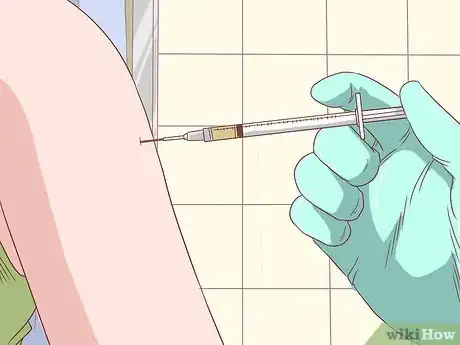



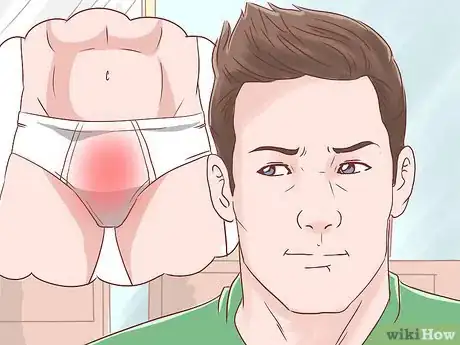
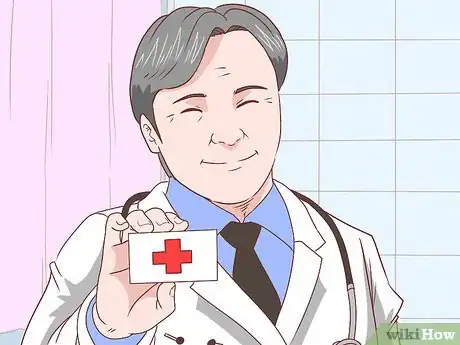


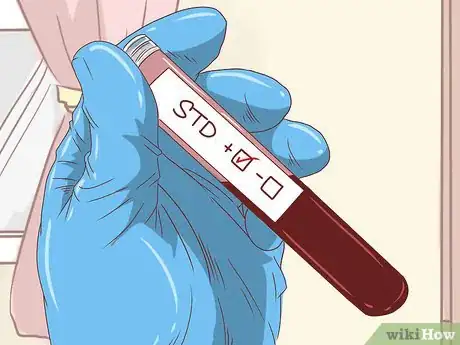



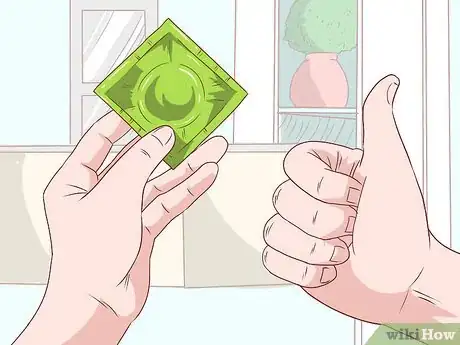





-Step-17.webp)


-Step-11-Version-2.webp)



-Step-10.webp)
-Step-13.webp)












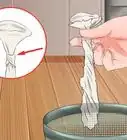



































Medical Disclaimer
The content of this article is not intended to be a substitute for professional medical advice, examination, diagnosis, or treatment. You should always contact your doctor or other qualified healthcare professional before starting, changing, or stopping any kind of health treatment.
Read More...